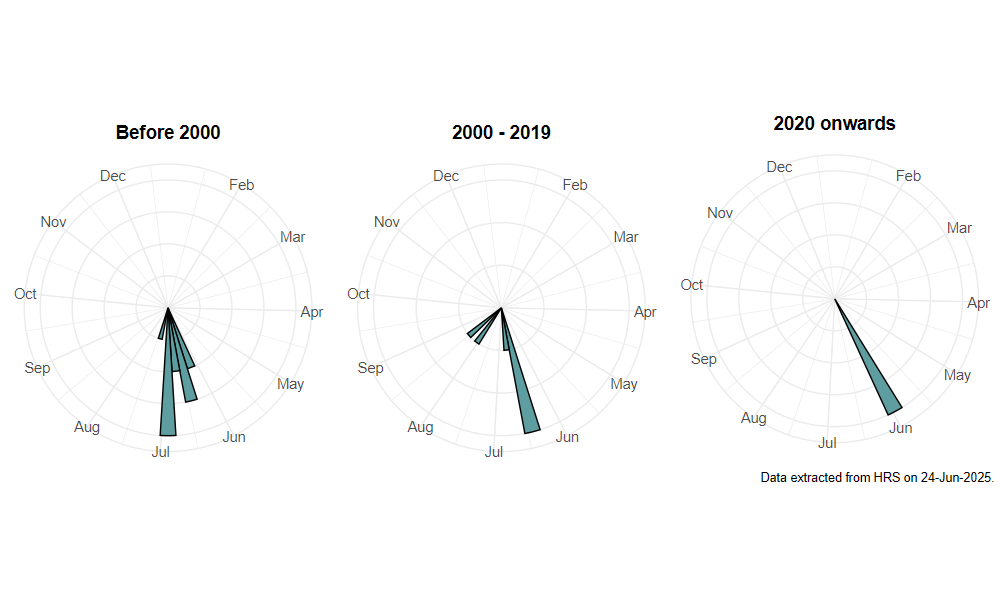Myolepta potens (Harris, 1780)
Identification
Identification difficulty = 5. ![]()
![]() according to Ball & Morris, 20241
according to Ball & Morris, 20241
Biology
The larvae are filter-feeders that inhabit water-filled rot-holes and have been found in rot-holes in Horse Chestnut Aesculus hippocastaneum, although it has been found in rot-holes in other deciduous tree species in the past.
Flight period
The following plots show the number of unique records per week excluding those reported to be of immature stages.

Status
CRITICALLY ENDANGERED - Ball & Morris, 20142. Endangered (RDB1) - Falk, 19913 and Shirt, 19874.
Distribution
This species was originally recorded from Loxley Wood in Somerset and the Bristol area but was last seen in 1961 when six larvae were found by J.C. Hartley in a rot-hole at Ashton Court not far from Combe Dingle. Despite many searches, it has not been found again in either area. Ball & Morris (2000)5 believed it to be extinct in Britain. Subsequently, larvae were found at Moccas Park NNR, Herefordshire in rot-holes in Horse Chestnut in 2002. Further survey showed that a strong population exists on this site utilising rot-holes in a variety of tree species. A new site in the Forest of Dean was reported by Phillips (2009)6 with suggestions that this species may be more widely distributed in that district.

-
Ball, S., & Morris, R. (2024). Hoverflies of Britain and Ireland. WILDGuides (3rd ed.). Oxford: Princeton University Press. ↩
-
Ball, S., & Morris, R. (2014). A review of the scarce and threatened flies of Great Britain. Part 6: Syrphidae. ( No. 9). Species status (pp. 1–130). Peterborough: JNCC. ↩
-
Falk, S. (1991). A review of the scarce and threatened flies of Great Britain. ( No. 39). Research and Survey in Nature Conservation (pp. 1–194). Peterborough: NCC. ↩
-
Shirt, D. (Ed.). (1987). Red Data Books: 2. Insects. Peterborough: NCC. ↩
-
Ball, S., & Morris, R. (2000). Provisional atlas of British hoverflies (Diptera, Syrphidae). Huntigdon: Biological Records Centre. ↩
-
Phillips, J. (2009). Myolepta potens in Gloucestershire. Hoverfly Newsletter, 47, 2. ↩